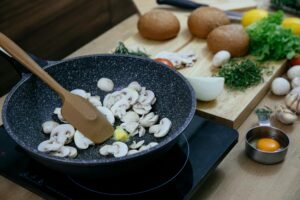How to Enjoy Honjozo Sake: A Comprehensive Guide
Sake, Japan’s traditional rice wine, offers various flavors and experiences. Honjozo sake stands out among its many varieties for its unique brewing process and balanced taste. This guide will explore the intricate details of Honjozo sake, ensuring you fully appreciate its distinct characteristics and enjoy it to the fullest.
Understanding Honjozo Sake
Honjozo sake is a premium variety distinguished by the addition of a small amount of distilled alcohol during the brewing process. This practice, which enhances the sake’s aroma and flavor, sets Honjozo apart from other sake types such as Junmai, which is made purely from rice, water, yeast, and koji mold.
Key Characteristics of Honjozo Sake
- Polishing Ratio: The rice used in Honjozo sake must be polished to at least 70%, meaning 30% of the outer layer of the rice grain is removed. This polishing process helps to eliminate impurities and results in a cleaner, more refined flavor.
- Flavor Profile: Honjozo sake typically has a light, crisp flavor with a subtle sweetness and a smooth finish. The added alcohol enhances its aroma, making it more fragrant and appealing.
- Aroma: Known for its delicate and inviting aroma, Honjozo sake often exhibits hints of fruits and flowers, which are accentuated by the brewing process.
Choosing the Right Honjozo Sake
Selecting the perfect Honjozo sake can be a delightful journey. Here are some tips to help you choose a high-quality Honjozo sake:
Check the Label
When buying Honjozo sake, look for labels that indicate the polishing ratio and the specific type of Honjozo, such as Tokubetsu Honjozo, which means “special Honjozo” and signifies a higher quality due to additional polishing or premium ingredients.
Understand the Brewer
Different breweries have unique brewing techniques and philosophies. Researching the background of the brewery can provide insights into the potential flavor and quality of the sake. Renowned breweries with a long history often produce exceptional Honjozo sake.
Consider the Season
Sake flavors can vary with the seasons. Freshly brewed sake, known as “Shiboritate,” is available in the winter and offers a lively and vibrant taste. In contrast, aged sake, or “Koshu,” has a more developed and complex flavor profile.
Proper Storage of Honjozo Sake
Proper storage is crucial to maintaining the quality of Honjozo sake. Here are some guidelines to ensure your sake remains in optimal condition:
Temperature Control
Honjozo sake should be stored in a cool, dark place. Excessive heat and light can degrade the flavor and aroma. Ideally, store your sake at a temperature between 41°F (5°C) and 59°F (15°C).
Upright Position
Keep the bottle upright to prevent oxidation and contamination. This position also helps preserve the sake’s natural flavor.
Sealed Bottles
Once opened, sake should be consumed relatively quickly. However, if you need to store an opened bottle, ensure it is tightly sealed and kept in the refrigerator. Opened Honjozo sake is best enjoyed within a few days to a week.
Serving Honjozo Sake
Serving Honjozo sake correctly can significantly enhance your tasting experience. Follow these tips for the best results:
Ideal Temperature
Honjozo sake can be enjoyed at various temperatures, each bringing out different aspects of its flavor:
- Chilled (41°F to 50°F / 5°C to 10°C): This temperature enhances the crispness and delicate flavors, making it perfect for a refreshing summer drink.
- Room Temperature (68°F / 20°C): At this temperature, the full range of flavors and aromas is more pronounced, offering a balanced and rich tasting experience.
- Warm (104°F to 122°F / 40°C to 50°C): Warming Honjozo sake brings out its umami and sweetness, making it a comforting choice during colder months.
Glassware
Use a sake-specific glass, such as a tokkuri (carafe) and ochoko (small cup), to fully appreciate Honjozo sake. The shape and size of these vessels help concentrate the aroma and deliver the sake smoothly to your palate.
Food Pairings with Honjozo Sake
Pairing Honjozo sake with food can elevate both the drink and the meal. Here are some excellent pairing options:
Sushi and Sashimi
The clean and crisp nature of Honjozo sake complements the delicate flavors of sushi and sashimi. The sake’s slight sweetness balances the umami of the fish, enhancing the overall dining experience.
Grilled Meats and Vegetables
Honjozo sake pairs well with grilled dishes, where its smooth finish and aromatic qualities can offset the richness of the meat and bring out the charred flavors of the vegetables.
Tempura
The light and airy texture of tempura is beautifully matched by the subtle and crisp profile of Honjozo sake. The sake’s acidity cuts through the oiliness of the tempura, providing a refreshing contrast.
Exploring Regional Variations
Different regions in Japan produce Honjozo sake with unique characteristics. Exploring these regional differences can be an exciting way to deepen your appreciation of this sake variety.
Niigata
Known for its clean and dry sake, Niigata’s Honjozo sake is often light and crisp, reflecting the region’s cold climate and pristine water sources.
Kyoto
Kyoto produces sake with a more mellow and smooth profile. The soft water in the region contributes to the gentle and rounded flavors of its Honjozo sake.
Hiroshima
Hiroshima’s sake is typically soft and slightly sweet, with a full-bodied texture. The region’s brewing techniques and climate play a significant role in shaping these characteristics.
Honjozo Sake Tasting Events
Participating in sake tasting events is a fantastic way to explore different Honjozo sakes and learn from experts. These events offer guided tastings, where you can sample a variety of sakes and gain insights into their production and flavor profiles.
Local Sake Breweries
Visiting local breweries can provide a deeper understanding of Honjozo sake. Many breweries offer tours and tastings, allowing you to see the brewing process firsthand and taste fresh sake directly from the source.
Sake Festivals
Sake festivals are held throughout Japan and internationally. These events gather numerous breweries and sake enthusiasts, offering a wide range of sakes to taste and compare. They also provide educational sessions on sake production, history, and culture.
Delving Deeper into the Honjozo Sake Brewing Process
Understanding the brewing process of Honjozo sake can greatly enhance your appreciation for this exquisite beverage. The intricate steps involved in its production reflect a blend of tradition, precision, and artistry.
Rice Polishing
The journey of Honjozo sake begins with rice polishing. The outer layer of the rice grain, which contains fats and proteins, is polished away to leave the starchy core. For Honjozo sake, at least 30% of the grain is removed, resulting in a 70% polishing ratio. This crucial step impacts the final flavor, as the remaining starchy core ferments more cleanly.
Washing and Soaking
After polishing, the rice is carefully washed to remove any residual powder and soaked to achieve the ideal moisture content. This process ensures that the rice absorbs water evenly, which is essential for consistent fermentation.
Steaming
The soaked rice is then steamed. Steaming makes the rice firm on the outside but soft on the inside, creating the perfect texture for the fermentation process. This step is critical as it influences how well the rice will interact with the koji mold and yeast.

Koji Making
Koji mold (Aspergillus oryzae) is introduced to a portion of the steamed rice to create koji rice. This mold breaks down the rice starches into sugars, which are essential for fermentation. Koji making is a meticulous process that requires constant monitoring and precise temperature control.
Fermentation
The fermented mash, known as moromi, is created by mixing steamed rice, koji rice, yeast, and water. This mixture undergoes multiple stages of fermentation over several weeks. The yeast converts the sugars into alcohol, gradually increasing the alcohol content and developing the sake’s complex flavors.
Addition of Distilled Alcohol
A defining characteristic of Honjozo sake is the addition of a small amount of distilled alcohol during fermentation. This step enhances the sake’s aroma and flavor, contributing to its smooth and balanced profile. The amount of alcohol added is carefully controlled to complement the natural qualities of the sake.
Pressing, Filtration, and Pasteurization
Once fermentation is complete, the moromi is pressed to separate the liquid sake from the solid rice lees (kasu). The sake is then filtered to remove any remaining impurities. Most Honjozo sake undergoes pasteurization to stabilize the product and prevent unwanted fermentation. This involves heating the sake to a specific temperature for a short period.
Aging
Some Honjozo sakes are aged to develop deeper flavors and complexity. Aging can take place in tanks or bottles, and the duration varies depending on the desired flavor profile. Aged Honjozo sake, known as “koshu,” often exhibits richer, more complex characteristics.
Honjozo Sake in Japanese Culture
Honjozo sake holds a special place in Japanese culture and traditions. It is often associated with celebrations, rituals, and ceremonies.
Ceremonial Use
Sake, including Honjozo, is used in various Shinto rituals and ceremonies. It is believed to purify and connect people with the divine. During weddings, sake is served in a ritual known as “san-san-kudo,” where the bride and groom take three sips from three different cups, symbolizing their union.
Cultural Festivals
Sake plays a central role in many Japanese festivals, such as the annual sake festival in Saijo, Hiroshima, and the Snow Festival in Niigata. These festivals celebrate the cultural heritage of sake brewing and offer attendees the opportunity to taste a wide variety of sakes, including Honjozo.
Gift-Giving Tradition
In Japan, giving sake as a gift is a common tradition, especially during the New Year and other special occasions. Honjozo sake, with its balanced flavor and appealing aroma, makes an excellent gift that reflects good taste and appreciation for fine craftsmanship.
Honjozo Sake: A Global Perspective
While Honjozo sake is deeply rooted in Japanese culture, its popularity is growing worldwide. Understanding its global reach can provide insights into its international appeal and versatility.
International Market
Honjozo sake has found a place in the international market, with exports increasing year by year. Countries like the United States, Canada, and various European nations have developed a keen interest in sake, appreciating its unique flavor profile and cultural significance.
Sake Sommeliers and Education
The rise of sake sommeliers and specialized sake courses has contributed to the global appreciation of Honjozo sake. These experts educate consumers on the nuances of sake, guiding them through tastings and food pairings, and promoting a deeper understanding of this traditional beverage.
Fusion Cuisine
Honjozo sake’s versatility makes it a popular choice in fusion cuisine. Chefs around the world are incorporating sake into their culinary creations, using it as a marinade, ingredient in sauces, or pairing it with dishes that extend beyond traditional Japanese cuisine.
Sustainable Practices in Honjozo Sake Production
As sustainability becomes increasingly important in the food and beverage industry, many sake breweries are adopting eco-friendly practices in Honjozo sake production.
Organic Rice Cultivation
Some breweries are turning to organic rice cultivation, avoiding the use of pesticides and chemical fertilizers. This not only produces healthier rice but also supports environmental sustainability.
Water Conservation
Water is a crucial component in sake production. Breweries are implementing water conservation techniques, such as recycling water used in the rice washing and steaming processes, to reduce their environmental footprint.
Energy Efficiency
Advancements in technology have enabled breweries to enhance energy efficiency. Solar panels, energy-efficient equipment, and other sustainable practices are being integrated into the sake production process, contributing to a greener industry.
The Future of Honjozo Sake
The future of Honjozo sake looks promising as it continues to gain recognition and appreciation both in Japan and globally.
Innovation in Brewing Techniques
Breweries are experimenting with innovative brewing techniques and new yeast strains to create unique and exciting Honjozo sakes. These innovations offer a fresh take on traditional practices, attracting a new generation of sake enthusiasts.

Increased Global Awareness
As sake continues to gain popularity worldwide, efforts to increase global awareness and education about Honjozo sake are expanding. Sake tastings, cultural events, and educational programs are helping to introduce more people to the rich history and flavors of this exquisite beverage.
Sustainable Growth
The focus on sustainability in sake production is expected to grow, with more breweries adopting eco-friendly practices. This commitment to sustainability ensures that future generations can continue to enjoy Honjozo sake while preserving the environment.
Conclusion
Honjozo sake is a remarkable beverage that embodies the artistry and tradition of Japanese sake brewing. By understanding its unique characteristics, selecting high-quality bottles, and appreciating its cultural significance, you can truly enjoy the depth and complexity of Honjozo sake. Whether you are savoring it with a carefully paired meal, exploring regional variations, or participating in a sake tasting event, Honjozo sake offers a rich and rewarding experience.















